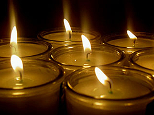 Rav Shmuel Salant, Rav of Yerushalayim (1816-1909). Born in Bialystok, Russia, his father passed away soon afterwards, and he was sent off to study in Salant, Lithuania, where it had alreadybeen arranged that he would eventually marry Toiba, the oldest daughter of Rav Yosef Zundel of Salant, from whom Rav Shmuel took his surname. Soon after his marriage, Rav Shmuel moved to Volozhin, where he was appointed magid shiur. He made aliyah in 1841. From 1848 to 1851, Rav Shmuel served the Yerushalayim community as a meshulach.
Rav Shmuel Salant, Rav of Yerushalayim (1816-1909). Born in Bialystok, Russia, his father passed away soon afterwards, and he was sent off to study in Salant, Lithuania, where it had alreadybeen arranged that he would eventually marry Toiba, the oldest daughter of Rav Yosef Zundel of Salant, from whom Rav Shmuel took his surname. Soon after his marriage, Rav Shmuel moved to Volozhin, where he was appointed magid shiur. He made aliyah in 1841. From 1848 to 1851, Rav Shmuel served the Yerushalayim community as a meshulach.
Recent comments